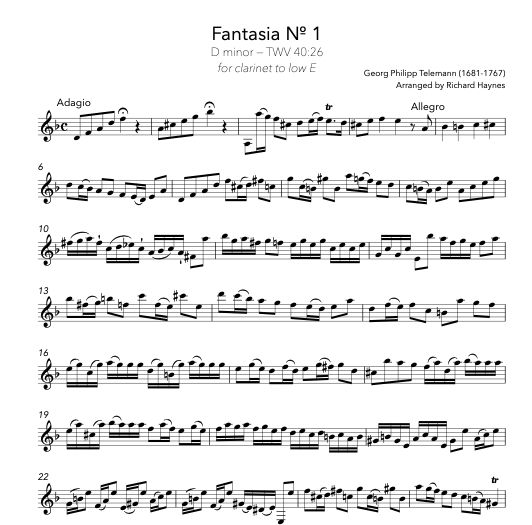Odd Quartertonal Rows and Scales
Whilst the clarinet is capable of incredible chromatic complexity and many different kinds of microtonality, this is often not condensed into its purest form, encountered most of the time in the repertoire and therefore learned within specific contexts. My charts aim to offer comprehensive examples of microtonal pitch systems in a way that can be practiced daily, in a multitude of different ways.
This chart goes one step further than "Interpolated Quartertone Scales" and stacks the odd (as opposed to 'even', which would be chromatic) quartertonal intervals to fully investigate these possibilities, instead of simply dividing the octave with them. As you will see, in the first chart (using the intervals of three quartertones) the intervals begin to repeat themselves after only three starting points (E, F and F#) and then in the final chart (using intervals of twenty-three quartertones), it takes iterations over almost two octaves before the possibilities are exhausted. The passages however become shorter and shorter because the range of each is steadily increased. It may indeed be wise to begin with the later charts and work backwards, depending on how you may want to increase challenge over time. Here’s an example of the rows and scales in three- to seventeen-quartertones beginning on E3:
These charts can be practiced by considering combining the following parameters:
1. Tempo: any tempo can be used, as slow as needed or as fast as possible. In the beginning use a metronome on a slow tempo and play one note at a time. You will quickly see how fluent you can be and then adjust the tempo accordingly;
2. Rhythm: any rhythm can be used, one note per beat i.e. crotchets, four notes per beat i.e. semiquavers, or even really slow with four beats per note i.e. semibreves; different rhythms or accelerations and decelerations can make these charts more challenging;
3. Articulation: any articulation can be used, from slurred, to legato tongued, to staccato, to slaps, alternations slap-staccato etc.;
4. Dynamic: any dynamic can be used, from ppp+ to fff+ though it's best to judge what's right for you. Practicing soft legato in the high register can be useful, for example, or try ascending decrescendi and descending crescendi.
Whether you tackle only one row a day or ten, it's not important. The aim of these charts is to have a comprehensive knowledge of the fingerings involved and be able to use them in various circumstances, combining the above musical parameters in different ways.
Thank you for embarking on this voyage of discovery. I wish you every success in finding fluency with almost every quartertonal interval on your instrument!










